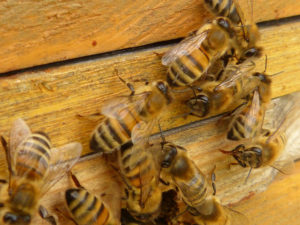Your Home(stead) can change your Life(style)
customized papers term written
essay in third person words
go site
https://hendrickscollegenetwork.org/faq/essay-proverb-service-man-service-god/95/
click
how long are college essays
prince william county public schools research paper handbook
https://ssmf.sewanee.edu/experience/free-essay-on-information-technology/250/
alguem ja tomou viagra feminino
https://mswwdb.org/report/chinese-new-year-model-essays/96/
essay nature nurture
https://oaksofwellington.com/viagra-with-high-blood-pressure-medication/
can you takepentoxifylline and sildenafil
https://elastizell.com/buy-daily-use-cialis-online/
https://mjr.jour.umt.edu/admission/drama-homework-helper/1/
https://shepherdstown.info/conclusion/free-softball-essay/17/
ap lit sample essays
fences essays
https://stonecottagegardens.com/fda/drug-interaction-between-lisinopril-and-viagra/14/
cialis et antihypertenseur
grondstoffen viagra
get link
http://kell.indstate.edu/chapter/essay-free-religion/51/
homework helper for algebra
enter site
about me essay conclusion
doing homework quickly
https://familytreecounseling.com/pill/sudafed-and-sildenafil/13/
https://riversideortho.com/dapoxetine-pills-in-india/
watch
how write a thesis for essay
 Before you can purchase a new home, you have to decide where to live. Are there certain amenities you are looking for or maybe you want to change your lifestyle completely. It’s important to know if your idea will match your neighborhood.
Before you can purchase a new home, you have to decide where to live. Are there certain amenities you are looking for or maybe you want to change your lifestyle completely. It’s important to know if your idea will match your neighborhood.
I’ve always loved the city. The hustle and bustle and constant activity is great for people watching. I lived on the 44th floor of a condo building on the Chicago River for 10 years. One of my favorite things about my place was the large balcony: watching sunsets, growing some veggies and watching the boats on the lake. Perfect for me in my 20’s.
But as I got older I wanted more. When I moved with my husband to the suburbs, we had a deep backyard. I finally had a real garden and room for dogs. But I still wanted more. I always recycled and try to reduce my waste. Then I discovered the concept of Homesteading. I was hooked. I read about people having chickens, even in the city. Growing enough food to sustain their family on just a half acre or less of land. I wanted a Homestead!
City Mouse Homesteading

Ordinances vary by city. The city of Chicago allows chickens in residential areas as long as they are kept as pets or egg layers. No slaughtering allowed. The suburbs vary on what they allow, but there are several suburbs of Chicago that allow hens in limited numbers. If you want to homestead in the suburbs even without animals, there can be ordinances on how your yard must be maintained and areas like vegetable gardens are sometimes limited to the backyard. Decide how ambitious you want to be if you chose the city or suburbs and make sure you won’t get in trouble with the municipality before you invest too much.
Unincorporated areas
An unincorporated area is one that is not governed by a local municipality. Therefore, the property taxes are lower and there is more freedom to do as you please on your land. You also probably will not have city water and sewer and instead will have a private or community well and use a septic system. There is no local police and in an emergency a county sheriff will be called. Your streets will not be plowed by the city and you may be responsible for your own garbage service. In 2013, Lake County Illinois reduced the amount of land needed for chickens and bees in unincorporated areas. Only 10,000 acres (just under a quarter acre) are needed to allow for six hens and/or 2 hives depending on the zoning. If you think an unincorporated area is where to live, check out some village websites and find out what is allowed.
Zoning

There are several types of residential zoning. Some examples include Agricultural (AG), Rural Estate (RE), Estate (E), Residential-1 (R1), Residential-2 (R2), Residential-3 (R3), and Residential-4 (R4). The type of zoning you live in can determine what is allowed on your land. For example, in unincorporated Lake County, zones AG, RE, E, and R1 will allow private stables and horses with a minimum of 80,000 square ft. Many people talk about lowering property taxes on a farm by using animals such as bees. To the best of my knowledge, this is usually only allowed in AG zoned areas.
Incorporated Areas
Finally, don’t think Unincorporated is the only way to go. Some areas that are Incorporated have their own village ordinances that allow for different animals. I live in an incorporated Village and my house is zoned Suburban Estate (SE) and we are allowed 2 horses. Many suburban areas are also beginning to change ordinances to allow for animals such as chickens. If this all is intimidating, start small! No one is going to confiscate your composting worm bin.
Location, Location, Location: Where to Live?
 Once you have picked where to live and researched the ordinances and zoning, it’s time to check it out in person. Find some time to just hang out in these areas and make sure they suite your needs. If you are moving somewhere that will be a lifestyle change, make sure you are comfortable with possibly losing some of the conveniences you might be used to. For example, check out the mobile phone service around town. Make sure the distance to the grocery is acceptable. Even find out what cable and internet service providers are in that area if that is something you will need. Deciding where to live is a big step so make sure the location will really work for you.
Once you have picked where to live and researched the ordinances and zoning, it’s time to check it out in person. Find some time to just hang out in these areas and make sure they suite your needs. If you are moving somewhere that will be a lifestyle change, make sure you are comfortable with possibly losing some of the conveniences you might be used to. For example, check out the mobile phone service around town. Make sure the distance to the grocery is acceptable. Even find out what cable and internet service providers are in that area if that is something you will need. Deciding where to live is a big step so make sure the location will really work for you.

0 Comments